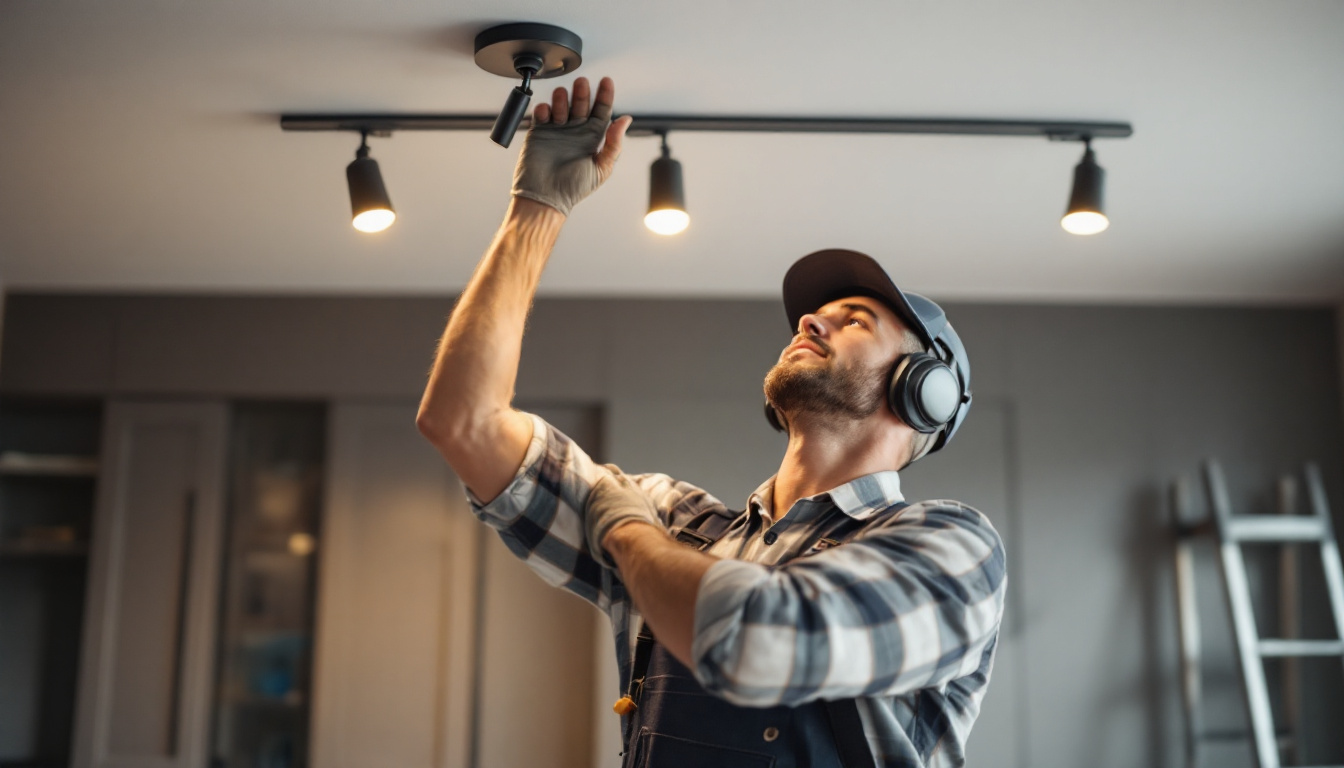
As the demand for energy-efficient lighting solutions continues to rise, LED can lights have emerged as a popular choice among homeowners and commercial property owners alike. For lighting contractors, understanding the best practices for installing and utilizing LED can lights is essential to meet client expectations and ensure optimal performance. This article delves into the best practices for LED can lights, providing valuable insights for lighting contractors.
LED can lights, also known as recessed lights, are fixtures that are installed into a hollow opening in the ceiling. They provide a sleek and modern look, making them ideal for various applications, from residential to commercial settings. Unlike traditional incandescent bulbs, LED lights offer several advantages, including energy efficiency, longevity, and reduced heat output.
One of the primary benefits of LED can lights is their energy efficiency. They consume significantly less electricity compared to incandescent or fluorescent lights, which can lead to substantial cost savings over time. Additionally, LED lights have a longer lifespan, often lasting up to 25,000 hours or more, reducing the frequency of replacements.
Another advantage is the reduced heat output. Traditional bulbs can generate a considerable amount of heat, which not only affects the comfort of the space but can also increase cooling costs. LED lights, on the other hand, emit very little heat, making them a safer and more efficient option. This feature is particularly beneficial in spaces with limited ventilation, where excessive heat can lead to discomfort and increased energy consumption for cooling systems.
LED can lights are versatile and can be used in various settings. In residential spaces, they are commonly installed in living rooms, kitchens, and bathrooms, providing ambient or task lighting. In commercial environments, they can enhance the aesthetic appeal of retail spaces, offices, and galleries, while also serving functional purposes. Their sleek design allows them to blend seamlessly into ceilings, creating a clean and unobtrusive look that is highly sought after in modern architecture.
Moreover, their ability to be dimmed and adjusted makes them suitable for different moods and activities, further enhancing their appeal to both contractors and clients. For instance, in a home theater setup, dimmable LED can lights can create a cozy atmosphere for movie nights, while in a kitchen, they can provide bright, focused light for meal preparation. Additionally, with advancements in smart technology, many LED can lights can now be controlled via smartphone apps or voice commands, allowing for even greater customization of lighting schemes to suit any occasion.
Proper installation of LED can lights is crucial for achieving optimal performance and client satisfaction. Here are some best practices that lighting contractors should follow:
Choosing the right LED can lights is the first step in ensuring a successful installation. Contractors should consider factors such as the size of the can, the beam angle, and the color temperature of the LEDs. A wider beam angle can provide more general illumination, while a narrower angle is ideal for highlighting specific areas.
Additionally, selecting fixtures with a high Color Rendering Index (CRI) is essential, as this will ensure that colors appear more vibrant and true to life. A CRI of 90 or above is generally recommended for residential applications.
The placement and spacing of LED can lights significantly affect the overall lighting quality. A common rule of thumb is to space the lights approximately 4 to 6 feet apart, depending on the height of the ceiling and the desired lighting effect. For higher ceilings, wider spacing may be necessary.
It’s also important to consider the purpose of the lighting. For task-oriented areas, such as kitchens or workspaces, more concentrated lighting may be required. In contrast, ambient lighting in living areas can be more diffused.
When installing LED can lights, it’s crucial to ensure that they are adequately insulated and ventilated. This is especially important in attics and other enclosed spaces where heat can accumulate. Using IC-rated (Insulation Contact) fixtures allows for safe contact with insulation materials, preventing overheating and potential fire hazards.
Additionally, providing proper ventilation can help maintain the longevity of the fixtures and ensure efficient operation. This includes ensuring that the fixtures are not blocked by insulation or other materials that could impede airflow.
Electrical considerations play a significant role in the installation of LED can lights. Lighting contractors must be aware of the following key aspects:
Many clients prefer dimmable LED can lights for added versatility. However, not all LED fixtures are compatible with standard dimmer switches. It’s essential to select dimmable LED fixtures and ensure that the dimmer switch is designed for LED use. This will prevent flickering and ensure smooth dimming capabilities.
Contractors should also educate clients on the benefits of using compatible dimmers, as this can enhance the overall lighting experience and energy efficiency.
LED can lights typically operate on standard voltage (120V) but can also be found in low-voltage options. When installing low-voltage fixtures, contractors must ensure that the appropriate transformers and wiring are used to prevent electrical issues.
It’s also important to follow local electrical codes and regulations when installing LED can lights. This includes ensuring that all wiring is properly secured and that connections are made in accordance with safety standards.
Contractors should be mindful of the circuit load when installing multiple LED can lights. Overloading a circuit can lead to tripped breakers and potential fire hazards. It’s advisable to calculate the total wattage of all fixtures and ensure that it does not exceed the circuit’s capacity.
In some cases, it may be necessary to distribute the load across multiple circuits, especially in larger installations. This not only enhances safety but also improves the overall performance of the lighting system.
While LED can lights are known for their longevity, occasional maintenance and troubleshooting may be required. Here are some best practices for ensuring the continued performance of these fixtures:
Dust and debris can accumulate on LED can lights, impacting their brightness and appearance. Regular cleaning is essential to maintain optimal performance. Contractors should advise clients on how to safely clean the fixtures, typically using a soft, dry cloth to avoid damaging the surface.
It’s also important to check for any obstructions around the fixtures, such as furniture or decor, that may block light output.
Flickering can be a common issue with LED can lights, often caused by incompatible dimmers, loose connections, or voltage fluctuations. Contractors should be prepared to troubleshoot these issues by checking the dimmer compatibility and ensuring that all connections are secure.
If flickering persists, it may be necessary to evaluate the electrical supply and consider using a power conditioner to stabilize voltage levels.
While LED lights have a long lifespan, they are not immune to failure. If a fixture stops working, contractors should assess whether the issue is related to the bulb, driver, or wiring. In many cases, replacing the driver can resolve the problem, but if the entire fixture is faulty, a complete replacement may be necessary.
Educating clients on the signs of potential issues can help them take proactive measures and reach out for assistance before problems escalate.
Effective communication and education are crucial when working with clients on LED can light installations. Here are some strategies for lighting contractors to enhance client satisfaction:
Before beginning an installation, it’s essential to have a thorough discussion with clients about their lighting preferences and needs. This includes understanding their desired ambiance, functionality, and any specific requirements they may have.
By presenting various options and explaining the benefits of different fixtures, contractors can help clients make informed decisions that align with their vision.
Clients often appreciate guidance on maintaining their lighting systems. Providing them with maintenance tips, such as cleaning schedules and troubleshooting steps, can empower them to care for their fixtures effectively.
Additionally, offering a follow-up service or check-in after installation can enhance the client relationship and demonstrate a commitment to quality service.
Many clients are motivated by the potential energy savings associated with LED lighting. Contractors should take the time to explain how LED can lights can reduce energy consumption and lower utility bills. Providing estimates of potential savings can further encourage clients to invest in energy-efficient solutions.
By emphasizing the long-term benefits, contractors can foster a sense of value and satisfaction in their clients.
LED can lights offer a modern, efficient, and versatile lighting solution for a variety of applications. For lighting contractors, understanding the best practices for installation, electrical considerations, maintenance, and client communication is essential to delivering high-quality service and ensuring client satisfaction.
By staying informed about the latest trends and technologies in LED lighting, contractors can position themselves as knowledgeable professionals in the field, ultimately leading to successful projects and satisfied clients.
In a rapidly evolving industry, embracing these best practices will not only enhance the quality of installations but also contribute to the overall growth and reputation of lighting contractors in the marketplace.
Ready to elevate your lighting projects with the efficiency and elegance of LED can lights? Look no further than LumenWholesale, where we provide lighting contractors with top-tier, specification-grade lighting products at unbeatable wholesale prices. Say goodbye to local distributor markups and hello to superior lighting solutions that meet the highest industry standards. With our hassle-free bulk buying and free shipping, you can ensure your projects shine with premium lighting at the best value. Don’t compromise on quality or cost. Visit LumenWholesale today and experience the ideal combination of quality, affordability, and convenience for all your lighting needs.

Discover the insider tips and expert techniques lighting contractors use to flawlessly install Leviton Decora switches.

Discover innovative strategies to ensure your lighting projects stand the test of time.

Discover essential tips and strategies for lighting contractors to prevent common pitfalls when installing exterior light electrical boxes.

Discover the ins and outs of T8 fluorescent lamps with our comprehensive guide tailored for lighting contractors.